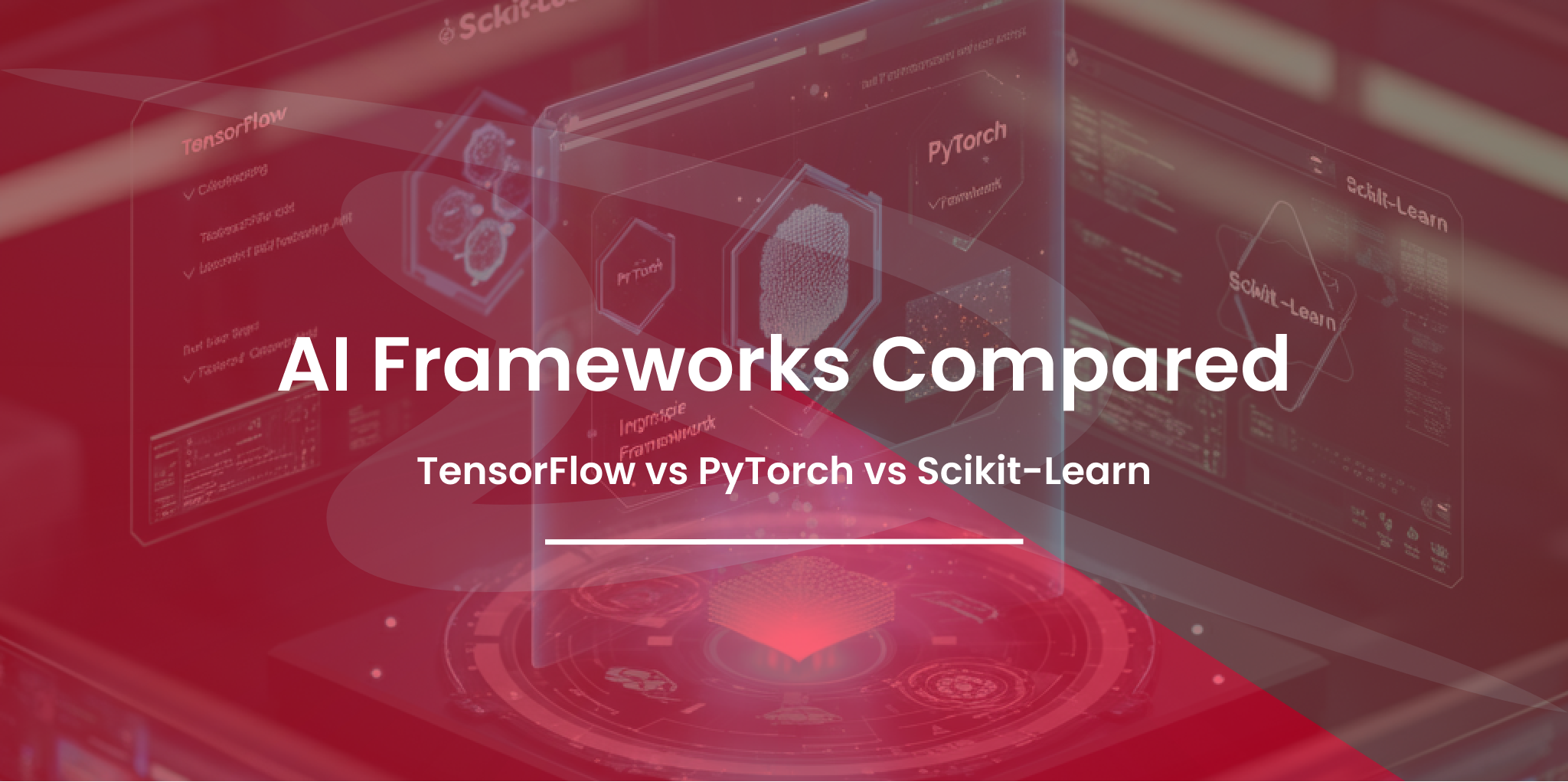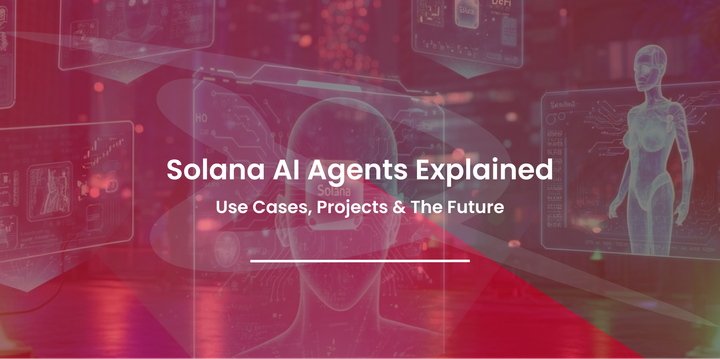AI Frameworks Compared: TensorFlow vs PyTorch vs Scikit-Learn
Compare AI frameworks—TensorFlow, PyTorch, and Scikit-Learn. Learn their pros, cons, and use cases. Which one suits your AI project? Read now!

Choosing the right AI framework can shape the success of your next project. Whether you're a data scientist, tech professional, or AI enthusiast, the right tools simplify complex machine learning tasks and accelerate development. And with so many frameworks to choose from, how do three of the most talked-about—TensorFlow, PyTorch, and Scikit-Learn—stack up against each other?
This guide dives deep into the strengths, limitations, and ideal use cases of these frameworks. By the end, you'll know which one aligns best with your needs, whether you're scaling enterprise AI or just starting with predictive analytics.
What Are AI Frameworks?
AI frameworks are libraries or platforms designed to simplify machine learning and deep learning development. They provide pre-built components, tools, and algorithms that developers can use to train, test, and deploy models efficiently.
Think of them as the scaffolding for AI projects. Instead of coding every algorithm or mathematical computation yourself, these frameworks handle the heavy lifting, allowing you to focus on problem-solving and innovation.
Why TensorFlow, PyTorch, and Scikit-Learn Stand Out
These three frameworks owe their popularity to their sheer versatility and robust ecosystems:
- TensorFlow: Known for its scalability and production-ready tools.
- PyTorch: Loved in academia for its intuitive, Pythonic syntax.
- Scikit-Learn: The go-to for anyone working on traditional machine learning projects.
How Frameworks Accelerate Development
By eliminating the need to build neural networks or ML algorithms from scratch, these tools fast-track development, streamline debugging, and, ultimately, make AI accessible for teams of all sizes.
But enough with the theory—let's break down each framework.
TensorFlow: The Powerhouse for Production
Overview and History
Developed by Google Brain in 2015, TensorFlow quickly became an industry favorite. It’s known for handling complex, large-scale machine learning (ML) models with ease. Publicly available as an open-source tool, it remains widely used across both research and industrial domains.
Key Features and Strengths
- TensorFlow Lite: Perfect for deploying lightweight models to mobile and edge devices. Think of your voice assistants or smart home systems.
- TensorFlow.js: Train and deploy models directly in a browser for responsive, platform-agnostic AI solutions.
- TensorBoard: Offers powerful visualization tools for model performance tracking.
Advantages of TensorFlow
- Scalability: From prototyping small models to deploying advanced production-grade systems, TensorFlow excels. It’s particularly beloved for distributed computing tasks, using GPUs and TPUs.
- Comprehensive Ecosystem: TensorFlow's integrations cater to a wide audience, providing robust deployment tools like TensorFlow Serving and pre-trained model libraries.
Limitations of TensorFlow
- Steep Learning Curve: Its syntax, though powerful, can be daunting for beginners.
- Complexity: Compared to PyTorch, TensorFlow can feel less flexible for exploratory work or fast prototyping.
PyTorch: Flexibility and Dynamic Computation
Overview and History
Launched in 2016 by Facebook's AI Research Lab (FAIR), PyTorch has become the framework of choice for academic research and rapid experimentation. Its dynamic computational graphs make it particularly suited for projects where flexibility and iteration are key.
Key Features and Strengths
- Dynamic Computational Graphs: These allow developers to change the structure of a network on the fly, making experiments faster and debugging easier.
- Native Python Integration: With its Python-first approach, PyTorch feels intuitive for developers familiar with Python programming.
- CUDA Acceleration: Seamlessly integrates with GPUs, boosting computational performance.
Advantages of PyTorch
- User-Friendly Syntax: The code structure is simpler and more readable compared to TensorFlow.
- Prototyping Made Easy: Its flexibility encourages researchers to explore and validate innovative deep-learning concepts quickly.
Limitations of PyTorch
- Deployment: While tools like TorchServe now exist, PyTorch still falls behind TensorFlow in terms of production readiness.
- Ecosystem: Although its community is growing quickly, it lacks TensorFlow's variety of supporting tools.
Scikit-Learn: Simplicity for Traditional ML
Overview and History
Scikit-Learn emerged from Python's robust scientific computing ecosystem, particularly NumPy and SciPy. It’s a staple for projects relying on traditional ML algorithms like regression, classification, or clustering.
Key Features and Strengths
- Data Preprocessing Tools: From scaling numeric data to encoding categorical variables, Scikit-Learn offers a treasure chest for preparing datasets.
- Beginner-Friendly APIs: Its straightforward functions and parameters make it accessible for beginners.
- Strong Documentation: Tutorials, references, and active community forums provide incredible support.
Advantages of Scikit-Learn
- Ease of Use: Ideal for small to medium datasets and students learning machine learning.
- Lightweight: Built with simplicity in mind, it’s best suited for straightforward, traditional ML tasks.
Limitations of Scikit-Learn
- No Deep Learning Support: Focused entirely on traditional machine learning.
- CPU-Only: While perfect for simpler tasks, it isn’t optimized for performance-heavy computations.
Detailed Comparison Table
Feature | TensorFlow | PyTorch | Scikit-Learn |
|---|---|---|---|
Ease of Use | Steep learning curve | Beginner-friendly | Excellent for ML beginners |
Performance | Production-grade, large-scale | Fast prototyping | Best for small-medium datasets |
Flexibility | Static graphs, eager mode option | Dynamic graphs | Limited predefined tasks only |
Deployment | TensorFlow Lite, TensorFlow.js | Developing TorchServe | Limited deployment tools |
Ideal Use Case | Large-scale production models | Academic research, prototypes | Traditional ML tasks |
When to Use Each Framework
- TensorFlow: Best suited for companies scaling AI to production and deploying models across diverse platforms (e.g., mobile, browsers).
- PyTorch: Ideal for research, particularly when flexibility and experimentation are required.
- Scikit-Learn: Perfect for beginners, small-scale projects, and business analytics focusing on traditional ML models.
Real-World Use Cases
TensorFlow in Production
Google Translate uses TensorFlow's high-performance capabilities to handle machine translation at scale. Google Photos also uses TensorFlow for image search functionality.
PyTorch in Research
Organizations like OpenAI rely on PyTorch for cutting-edge research and development, particularly for reinforcement learning and NLP advancements.
Scikit-Learn in Business Analytics
Many Kaggle competitors and small businesses leverage Scikit-Learn to clean data, build models, and create actionable insights without heavy computational overhead.
Choosing the Right AI Framework
Selecting the right framework boils down to understanding your project's needs. Ask yourself:
- Is this for production or prototyping?
- How complex are the models or algorithms?
- Will you leverage GPUs or stick to CPU-based computations?
When in doubt, start small with what you're comfortable with—but stay open to exploring other tools as projects evolve.




Comments ()